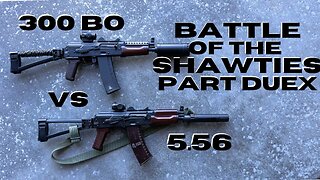Premium Only Content

OPERATION GLADIO - STAY BEHIND
OPERATION GLADIO - STAY BEHIND
Operation Gladio is the codename for clandestine "stay-behind" operations of armed resistance that were organized by the Western Union (WU), and subsequently by NATO and the CIA,[1][2] in collaboration with several European intelligence agencies.[3] The operation was designed for a potential Warsaw Pact invasion and conquest of Europe. Although Gladio specifically refers to the Italian branch of the NATO stay-behind organizations, "Operation Gladio" is used as an informal name for all of them. Stay-behind operations were prepared in many NATO member countries, and some neutral countries.[4]
During the Cold War, some anti-communist armed groups engaged in the harassment of left-wing parties, torture, terrorist attacks, and massacres in countries such as Italy.[5][6][7][8] The role of the CIA and other intelligence organisations in Gladio—the extent of its activities during the Cold War era and any responsibility for terrorist attacks perpetrated in Italy during the "Years of Lead" (late 1960s–early 1980s)—are the subject of debate. Researcher Francesco Cacciatore, in an article based on recently de-classified documents, writes that a "note from March 1972 specified that the possibility of using 'Gladio' in the event of internal subversions, not provided for by the organization's statute and not supported by NATO directives or plans, was outside the scope of the original stay-behind and, therefore, 'never to be considered among the purposes of the operation'. The pressure put forward by the Americans during the 1960s to use 'Gladio' for purposes other than those of a stay-behind network would appear to have failed in the long term."[9]
In 1990, the European Parliament adopted a resolution alleging that military secret services in certain member states were involved in serious terrorism and crime, whether or not their superiors were aware.[10] The resolution also urged investigations by the judiciaries of the countries in which those armies operated, so that their modus operandi and actual extension would be revealed.[11] To date, only Italy, Switzerland and Belgium have had parliamentary inquiries into the matter.[12][13]
The three inquiries reached differing conclusions as regarded different countries. Guido Salvini, a judge who worked in the Italian Massacres Commission, concluded that some right-wing terrorist organizations of the Years of Lead: La Fenice, National Vanguard and Ordine Nuovo were the trench troops of a secret army, remotely controlled by exponents of the Italian state apparatus and linked to the CIA.[14] Salvini said that the CIA encouraged them to commit atrocities.[15] The Swiss inquiry found that British intelligence secretly cooperated with their army in an operation named P-26 and provided training in combat, communications, and sabotage.[16] It also discovered that P-26 not only would organize resistance in case of a Soviet invasion, but would also become active should the left succeed in achieving a parliamentary majority.[17] The Belgian inquiry could find no conclusive information on their army. No links between them and terrorist attacks were found, and the inquiry noted that the Belgian secret services refused to provide the identity of agents, which could have eliminated all doubts.[18] A 2000 Italian parliamentary report from the left wing coalition Gruppo Democratici di Sinistra l'Ulivo reported that terrorist massacres and bombings had been organised or promoted or supported by men inside Italian state institutions who were linked to American intelligence. The report also said the United States was guilty of promoting the strategy of tension.[19] Operation Gladio is also suspected to have been activated to counter existing left-wing parliamentary majorities in Europe.[20]
The US State Department published a communiqué in January 2006 that stated claims the United States ordered, supported, or authorized terrorism by stay-behind units, and US-sponsored "false flag" operations are rehashed former Soviet disinformation based on documents that the Soviets forged.[21]
The word gladio is the Italian form of gladius, a type of Roman shortsword.
-
 LIVE
LIVE
Dear America
10 hours agoIs Trump’s, JD Vance’s Life In DANGER? + Trudeau RESIGNS as Canada’s PM, Names Successor!
5,967 watching -
 LIVE
LIVE
Wendy Bell Radio
4 hours agoDemocrats Have Lost Their Minds
10,278 watching -
![CIA Documents Implicate The Soros’ As Ukraine War Criminals. Putin Agrees [EP 4467-8AM]](https://1a-1791.com/video/fwe1/b9/s8/1/g/A/g/r/gAgry.0kob-small-CIA-Documents-Implicate-The.jpg) LIVE
LIVE
The Pete Santilli Show
14 hours agoCIA Documents Implicate The Soros’ As Ukraine War Criminals. Putin Agrees [EP 4467-8AM]
2,101 watching -
 1:55:20
1:55:20
TheDozenPodcast
19 hours agoPrison Officer EXPOSES deaths in custody: Sam Samworth
6.85K2 -
 25:23
25:23
Fit'n Fire
20 hours ago $0.30 earnedThe Krink at Home Part 2 - PSA 300 Blackout Krink vs PSA 5.56 Krink
3.17K3 -
 1:01:29
1:01:29
PMG
18 hours ago $1.85 earnedTrump's Speech, SCOTUS Forces USAID Payments, and Justice For MRNA Vaccine Victims
9.88K6 -
 4:23:59
4:23:59
STARM1X16
14 hours agoSunday Night Duos
86.1K4 -
 1:02:11
1:02:11
The Dan Bongino Show
1 day agoSunday Special with Vince Coglianese, Rep. Tim Burchett, Rep. Byron Donalds & Vivek Ramaswamy
219K360 -
 2:29:38
2:29:38
TheSaltyCracker
14 hours agoPiss Off War Pigs ReeEEeE Stream 03-09-25
223K424 -
 1:03:55
1:03:55
Sarah Westall
15 hours agoCanada Media Mind Control to increase Assisted Suicide, Confusion & Enslavement w/ Jasmin Laine
84K19